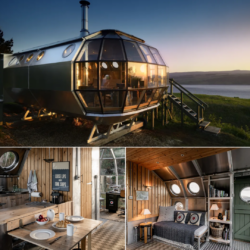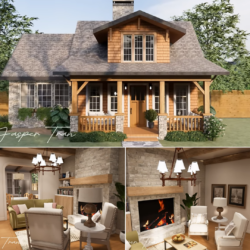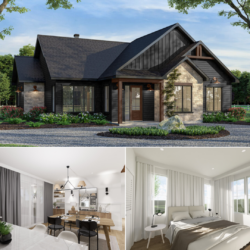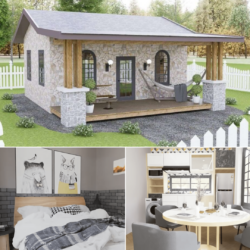

Tiny houses have become a lifestyle that has rapidly increased in popularity recently. These small buildings, which offer an ideal solution, especially for those who want to escape from the intensity and chaos of city life, attract attention with both their economic and ecological advantages. A cozy, small, and tiny house can be considered a minimalist response to the needs of modern life.
One of the biggest advantages of tiny houses is using limited space with maximum efficiency. These houses, which vary between 10 and 40 square meters on average, can be quite functional thanks to creative interior design solutions. Innovative ideas such as folding beds, wall-mountable desks, and multi-purpose furniture ensure efficient use of space. This way, even a small living space can accommodate everything you need.
The cost of building or purchasing a large home can be a huge financial burden for most people. Tiny houses, on the other hand, can be built at much lower costs and can also reduce operating costs by using sustainable energy sources. Using renewable energy solutions for basic needs such as heating, cooling, and electricity contributes to both the environment and your budget in the long run. Additionally, living in a tiny house also encourages reviewing consumption habits, which helps adopt an economical lifestyle in the long run.
Tiny houses also offer significant advantages in terms of environmental sustainability. Using less materials and energy significantly reduces the carbon footprint. Built using recyclable materials, these houses offer an environmentally friendly life. Additionally, living in a small space encourages one to be a more conscious consumer. Being more sensitive about issues that require environmental awareness, such as recycling and energy saving, contributes to the adoption of a sustainable lifestyle.
Living in a tiny house can also improve the quality of life. The stress caused by large and complex living spaces can be replaced by a calmer and more peaceful life in tiny houses. A minimalist lifestyle allows a person to use only the items they need, which means less mental clutter. Plus, the lower maintenance of a tiny house creates more free time, which you can use to spend with loved ones or pursue your hobbies.


The tiny house movement is often centered around a spirit of community. Tiny homeowners tend to form stronger connections with people who share similar values. These communities encourage the sharing of information and resources, increase solidarity, and strengthen social relationships. Tiny house festivals, workshops, and online forums allow these communities to come together and share experiences. Thus, the challenges of living in a tiny house can be overcome more easily with the support of the community.


Living in tiny houses can also have positive effects on health and well-being. A minimalist lifestyle reduces the stress and anxiety created by unnecessary items. Plus, living in a smaller space requires less cleaning and maintenance, which means less strain physically and mentally. Offering the opportunity to be immersed in nature, portable tiny houses encourage spending more time on outdoor activities, which can increase overall health and happiness.


The process of building tiny houses often encourages creativity. Many people choose to design and build their own tiny houses, promoting the Do-It-Yourself (DIY) culture. This process offers the person the opportunity to improve their skills, increase their problem-solving abilities, and strengthen their self-confidence. Additionally, the possibility of customizing every detail of the house according to one’s needs and tastes creates a personal bond and makes the living space more special.






